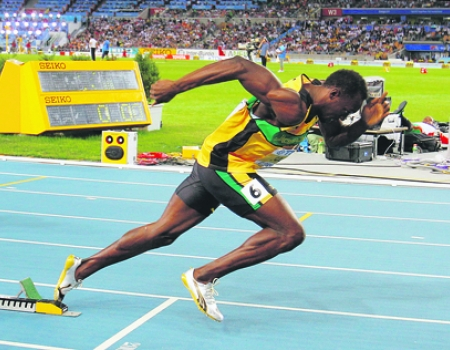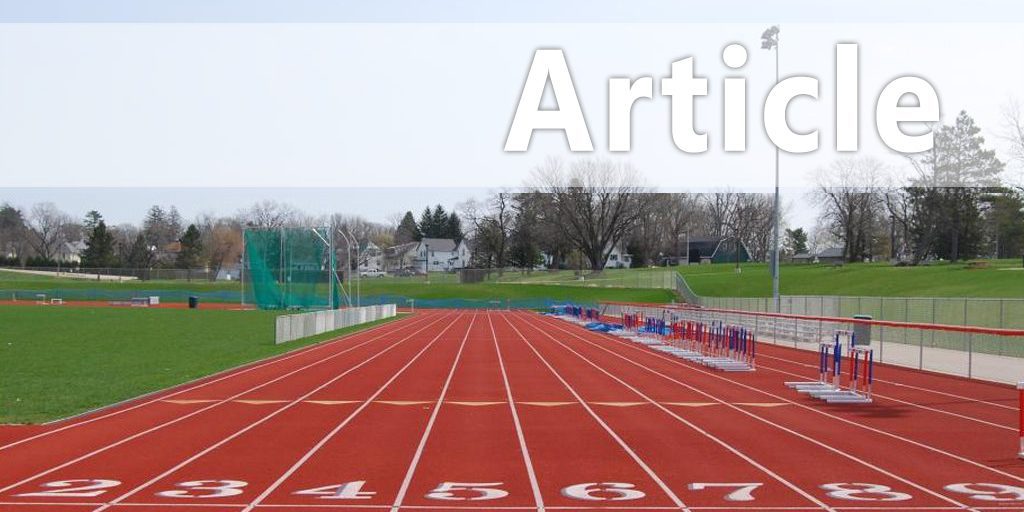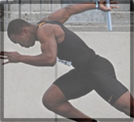|
How to Use Starting Blocks in Track and Field Provided By - Digital Track and Field
 Starting blocks are used in the sprinting events up to 400 meters and both hurdle races in track and field. The block start is broken down into three phases for the track and field runner: alignment, set position and start. Alignment Front pedal is set two steps away from the start line of the race. The back pedal should be three steps way from the starting line. The sprinter will back into the pedals and firmly place the feet into the block pads; the top of the spike shoe should be on the track with the front foot. After firmly placing the feet into the blocks, the sprinter will kneel down on the rear leg and place the hands just behind the starting line slightly wider than shoulder width apart. The fingers are held together, with the thumbs in, like a bridge. The hands should be placed with the thumbs under the shoulders ready to support the runner’s bodyweight. The sprinter should look down, with the back of the head and spine in a straight line. Set Position On the “set” command from the starter, the runner slowly rises up. The hips will rise slightly higher than the shoulders, the bodyweight is shifted forward over the shoulders. The arms are straightened with the hands supporting the runner’s weight. The feet maintain pressure on the blocks with the tip of the shoe still on the track. If you look at knee angles, the front knee is bent between 90 and 100 degrees. The rear knee has a bend of 120-135 degrees. The angle can be depend on the strength level of the athlete, often younger athletes with a limited training base will have the hips raise up more during the set command. Start
The back leg is driven forward at the sound of the gun as the front leg extends, pushing off the block pedal. The arms are aggressively extended, forward and back. If the rear leg is the right leg, the left arm is driven forward as the right arm is driven back. The head stays neutral on the start, looking down the track slightly. The body is thirsted forward and slightly upward at the start of the race. Once the runner is out of the blocks the drive phase begins. Block Start Tips
200 Meter Start The 200 meter runner should turn the back part of the blocks out slightly, then the sprinter can drive straight out of the blocks and move down the track a few steps before curve running begins. 100/110-Meter Hurdle Start Generally, eight steps are taken to the first hurdle. In a short sprint race, a typical drive phase might last 30 meters. In the short hurdle race, the drive phase can last until the third hurdle but the hurdler must get tall sooner to clear the hurdles. The hurdler has to drive up more to be in position to attack the first hurdle in the race. The runner will increase stride frequency to get the body in better position to clear the first hurdle. Hurdle Start Tips
Basic Teaching Progression (Block Starts)
Block Start Review
The proper block start is important part of track and field training and will set up the drive phase of the sprinting and hurdle events. From beginners to Olympic level runners, the block start is critical for a successful race.
|
|
|







